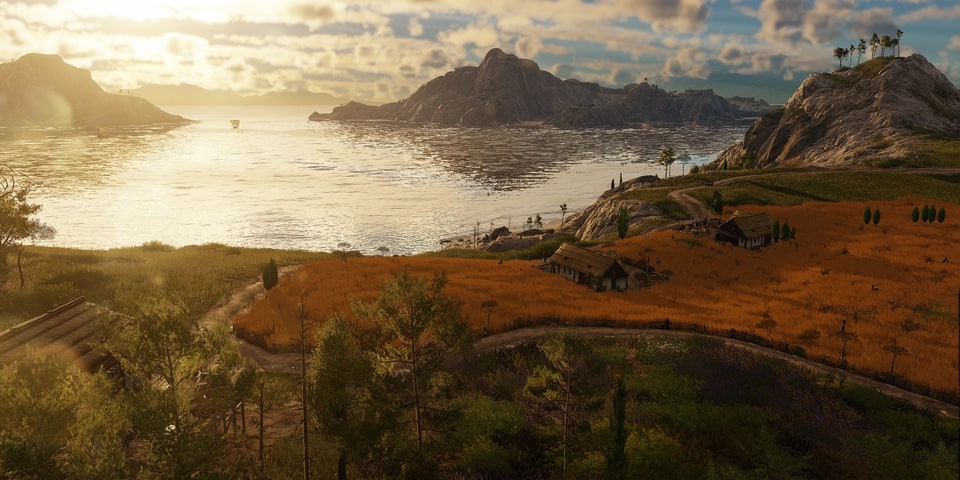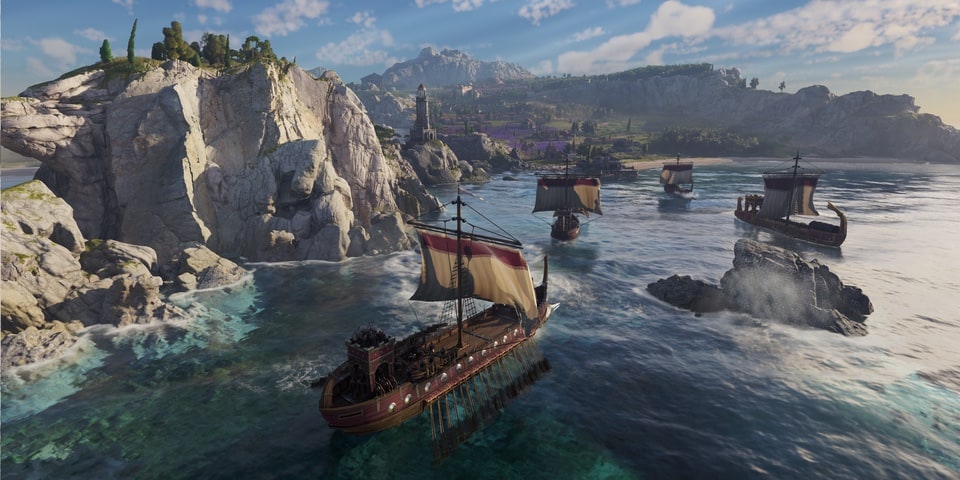Outside of a pair of ventures into the far-flung future, the Anno series has always set its city-building ventures in the times of the Renaissance, early colonialism and through to the Industrial Revolution. Anno 117: Pax Romana rips us all the way back to the heights of the Roman Empire – literally, 117 AD was the Roman Empire at its greatest – and a period of relative peace to allow your budding settlements to flourish without too much worry of war breaking out.
The game lets you play in two domains, either within the Roman Empire in Latium or in the less tamed Albion, and it was the former of these that we got to go hands-on with. Settling on a pleasant island, you get to work setting down a villa for your governor to call his home, laying down roads and connections between that, a port, and the first industry and living spaces for your citizens.
This is actually my first real experience of the Anno franchise, and I’m pleased to say that the game really sits under your fingers and thumbs quite nicely. Laying roads and buildings snaps neatly to a grid, and there’s just the right amount of freedom here in letting you shift to 45º angles for some pleasing variety in laying out your city – albeit accepting that buildings won’t pop up to fill off-angle spaces for you.
Anno 117 absolutely nails the look and feel of this as well, from the basic residences that you place through to the huge fields of wheat, hemp and other crops that would make Russell Crowe break down in tears – now that I think about it, that scene was about something else…
There’s a holistic cycle of building blocks of housing for new residents, unlocking new building types and industries to meet their wants and desires, and then being able to upgrade those domiciles to suit higher-class citizens who supply workers to new buildings and have a new set of needs. This is not a game for those of you who are opposed to gentrification!
It’s quite straightforward stuff in the opening hours. With the Libertus residents, you need to start fishing for sardines and farming for oats to supply a porridge kitchen to meet their food needs – this a simple two-step production line that just requires that the buildings are within range of one another, and of a warehouse for any storage overflow. With their tummies full, a marketplace and a tavern are unlocked, before catering to clothing with simple hemp tunics and woollen hats.
It’s once the Plebians arrive in upgraded homes that things start to get a shade more demanding. Baking requires wheat, salt water and a bakery, and I soon found industries that I couldn’t cater to simply from the natural qualities of the island. Without ground that’s suitable for olives, I can’t make olive oil, and with the noise and stench of pig farming to supply a tannery, making sandals has a negative impact on people’s happiness if everything’s clustered together. And then once you need to start making charcoal, the risks of fire grow, so you need to have firefighting and other public services ready and waiting to tackle any sudden challenges.
It won’t take too long, then, before you’re having to look beyond your starting island for ways to progress. Having arrived on a Trireme, you can send this ship out to explore the world map, pushing back the fluffy white clouds that obscure the archipelago of other small islands, bumping into other settlements, like that of Governor Tarragon of Ithacus, and just random island-spanning villas, such as that of Diana Augusta. There’s also unsavoury slavers, people of different regions entirely, and the diplomacy will let you set out whether you have a friendly and cordial relationship, or an antagonistic one. Given the cartoonishly evil looks of the slaver, you can happily antagonise them, but you likely want to work with your neighbours to establish trade routes, and Diana’s island provides missions that you can take on, some early narrative as you and some of your citizens look to attend her party.
One element that I really didn’t engage with was the warfare that is possible here. You can build up a military garrison and fence off your settlement, and while you’re on the high seas, some missions can have you run into hostile ships. Similarly, I barely got to scratch the surface of the research tree – some of which will tie across to managing a settlement in Albion, it seems – and the broad strokes of diplomacy and trade.
One thing that really stands out about Anno 117, though, is just how good it looks. The landscapes are lush and verdant, there’s a lot of fine detail to all of the buildings, and zooming in lets you appreciate the hustle and bustle as people wander around. I really enjoyed, as well, that this island I started on actually had ruins from a previous settlement off on the other side, giving a little sense of the centuries that the Roman Empire had already existed for prior to the Pax Romana period. Wrapped around this is the optional day-night cycle. You can lock the game at a particular time of day if you wish, but you miss out on the gorgeous sunsets and daybreaks, albeit with nighttime making it a little trickier to get building and management done – you’re always just a toggle click away from daylight, though.
From the opening hours I played, Anno 117: Pax Romana is shaping up as a lovely take on the city building genre, and an exciting step back into ancient history for fans of the series.






